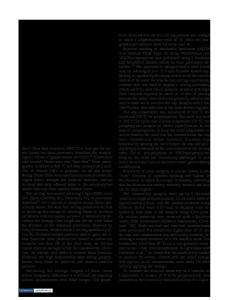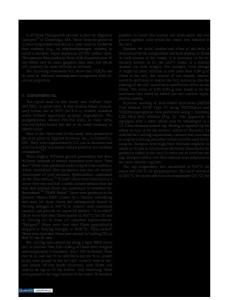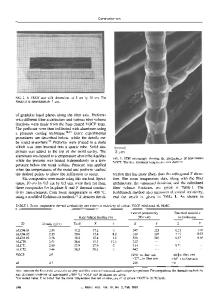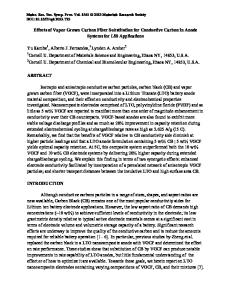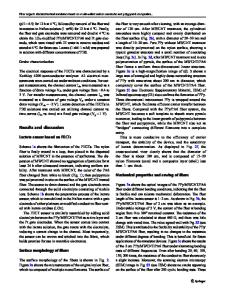Composites based on thermally hyper-conductive vapor grown carbon fiber
- PDF / 1,886,755 Bytes
- 7 Pages / 576 x 792 pts Page_size
- 39 Downloads / 354 Views
Aluminum matrix composites and carbon/carbon composites based on vapor grown carbon fiber (VGCF) were fabricated for analysis of thermophysical properties. Due to the highly graphitic nature of VGCF, the resulting composites exhibit values of thermal conductivity that have not been achieved by using any other carbon fibers, and thus represent new materials for thermal management in applications such as packaging for high-power, high-density electronic devices. In the aluminum matrix VGCF composites, a thermal conductivity of 642 W/m-K was obtained by using a VGCF loading of only 36.5 vol. %. For VGCF/C composites, thermal conductivity of 910 W/m-K has been observed, a value which is more than a factor of two higher than that of copper. Based on the observed thermal conductivity of VGCF/Al composites and VGCF/C composites, the room temperature thermal conductivity of VGCF in the composite was calculated to be 1460 W/m-K and 1600 W/m-K, respectively.
I. INTRODUCTION Since their earliest development, composite materials have primarily been used for structural applications. Recently, attractive applications for composite materials in thermal management have emerged. 13 For example, composite materials, especially metal matrix composites (MMC), have been found to be extremely useful for heat dissipation in electronic packaging.1"3 Typical MMC's for electronic packaging components have shown a coefficient of thermal expansion (CTE) that can be tailored by varying the architecture of reinforcing agents, and they exhibit reduced weight as compared to neat metals due to the incorporation of lower density reinforcing agents. These composite materials include carbon fiber reinforced aluminum or copper, silicon carbide (SiC) particle-reinforced aluminum, and diamond particle-reinforced aluminum.3"7 However, these composite materials do not show substantial improvement in thermal conductivity, which is a key property requirement for packaging components. In this paper, we describe the use of continuous vapor grown carbon fiber (VGCF) as a reinforcement in carbon/carbon (C/C) and aluminum matrix composites (Al MMC) for thermal management. The advantage of using VGCF in composite materials resides in the fact that VGCF exhibits the highest thermal conductivity among all the carbon fibers and all other materials except for single crystal graphite and diamond. Figure 1 compares the room temperature thermal conductivity, as well as electrical resistivity,
of various carbon fibers and metals.8 VGCF can be produced with9 or without 1011 a substrate to support the catalyst particles. VGCF produced without the use of a substrate to support the catalyst particles is discontinuous (50 to 100 /im in length and less than 1 /mm in diameter). In contrast, VGCF produced on a catalystseeded substrate can have lengths greater than 30 cm. Very limited work has been done on using this type of fiber as a reinforcement in composite materials due to its limited availability, although discontinuous VGCF has been recently used as reinforcement in epo
Data Loading...
